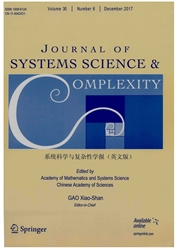

 中文摘要:
中文摘要:
这篇论文由为这些活动造一个模式和由两部组成的网络使用一条广泛的网络途径到东方 Turkistan 活动。在一个模式网络,中心性分析和光谱分析被用来描述每个顶点的重要性。在这个基础上,核心顶点的二种类型在社区之中的社区和中间人顶点的中心被区分。加权的极端优化(WEO ) 算法也被使用在一个模式网络检测社区。在恐怖主义者恐怖主义者组织由两部组成联网,作者象基于原来的由两部组成的网络聚类分析以便计算每个顶点的重要性一样采用中心性分析,并且使用聚类系数算法检测社区的边。比较、实验的分析显示这研究被证明了是在东方 Turkistan 恐怖主义者活动的网络识别核心成员,关键组织,和社区的一个有效方法。结果能为东方 Turkistan 恐怖主义者活动的分析提供一个科学基础,并且因此为反恐怖主义的真实工作提供决定支持。
 英文摘要:
英文摘要:
This paper uses an extensive network approach to "East Turkistan" activities by building both the one-mode and the bipartite networks for these activities. In the one-mode network, centrality analysis and spectrum analysis are used to describe the importance of each vertex. On this basis, two types of core vertices -- The center of communities and the intermediary vertices among communities are distinguished. The weighted extreme optimization (WEO) algorithm is also applied to detect communities in the one-mode network. In the "terrorist-terrorist organization" bipartite network, the authors adopt centrality analysis as well as clustering analysis based on the original bipartite network in order to calculate the importance of each vertex, and apply the edge clustering coefficient algorithm to detect the communities. The comparative and empirical analysis indicates that this research has been proved to be an effective way to identify the core members, key organizations, and communities in the network of "East Turkistan" terrorist activity. The results can provide a scientific basis for the analysis of "East Turkistan" terrorist activity and thus provide decision support for the real work of "anti-terrorism".
 同期刊论文项目
同期刊论文项目
 同项目期刊论文
同项目期刊论文
 期刊信息
期刊信息
